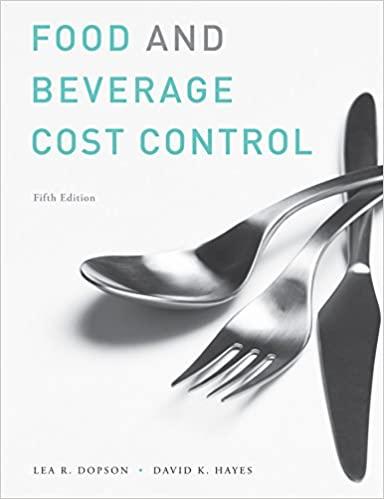





Spelling Sporls, which produces basketballs, has two departments: cutting and stitching. Each department has one direct-cost category (direct materials) and one indirect-cost category (conversion costs). This problem focuses on the stitching department. Basketballs that have undergone the cutting process are immediately transferred to the stitching department. Direct material is added when the stitching process is 70% complete. Conversion costs are added evenly during stitching operations. When those operations are done, the basketballs are immediately transferred to Finished Goods. Spelling Sports uses the weighted-average method of process costing. The following is a summary of the March 2017 operations of the stitching department: (Click the icon to view the information.) Read the requirements. Data table Requirement 1. Summarize total binding depar Begin by completing the following table to sum B C D E Physical Units Transferred-In Direct Conversion (basketballs) Costs Materials Costs 17,500S 45,360 S OS 17,6601 100% 0% 60% Beginning work in process 3 Degree of completion, beginning work in process 4 Transferred in during March 2017 5 Completed and transferred out during March 2017 6 Ending work in process, March 31 7 Degree of completion, ending work in process 8 Total costs added during March 56,000 52,000 21,500 0% 20% Beginning work in process Transferred In during March To account for Completed and transferred out during March Ending work in process Accounted for 100% % 154,560 S S 28,000 S 89,310 ( Print ) Done Equivalent units of work done to date amounts with a zero balance, make sure to Summarize total costs to account for, and calcul enter "0" in the appropriate cell.) Total Transferred-In Direct Conversion Spelling Sports, which produces basketballs, has two departments: cutting and stitching. Each department has one direct-cost category (direct materials) and one indirect-cost category (conversion costs). This problem focuses on the stitching department. Basketballs that have undergone the cutting process are immediately transferred to the stitching department. Direct material is added when the stitching process is 70% complete. Conversion costs are added evenly during stitching operations. When those operations are done, the basketballs are immediately transferred to Finished Goods. Spelling Sports uses the weighted average method of process costing. The following is a summary of the March 2017 operations of the stitching department (Click the icon to view the information.) Read the requirements. X Requirements Requirement 1. Summarize total binding department costs for April 20 Begin by completing the following table to summarize the physical and 1. Summarize total stitching department costs for March 2017, and assign these costs to units completed (and transferred out) and to units in ending work in process 2. Prepare journal entries for March transfers from the cutting department to the stitching department and from the stitching department to Finished Goods. Physical Uni (books) Beginning work in process 17,4 Transferred in during March Print Done To account for Completed and transferred out during March Ending work in process 52. Accounted for Equivalent units of work done to date Summarize total costs to account for, and calculate the cost per equivalent unit for transferred-in costs, direct materials, and conversion costs. Begin by summarizing the total costs to account for. (For amounts with a zero balance, make sure to enter "O" in the appropriate cell.) Requirement 1. Summarize total binding department costs for April 2017, and assign these costs to units completed (and transferred out) and to units in ending work in process. Begin by completing the following table to summarize the physical and equivalent units. (For amounts with a zero balance, make sure to enter "O" in the appropriate cell.) Equivalent Units Physical Units Transferred-In Direct Conversion (books) Costs Materials Costs Beginning work in process Transferred in during March 17,500 56,000 Share this page To account for Completed and transferred out during March 52,000 21,500 Ending work in process Accounted for Equivalent units of work done to date Summarize total costs to account for, and calculate the cost per equivalent unit for transferred-in costs, direct materials, and conversion costs. Begin by summarizing the total costs to account for. (For amounts with a zero balance, make sure to enter "O" in the appropriate cell.) Total Transferred-In Direct Conversion Production Costs Costs Materials Costs Total costs to account for Calculate the cost per equivalent unit for transferred-in costs, direct materials, and conversion costs. (Round your answers to the nearest cent.) Transferred-In Direct Conversion Costs Materials Costs Divide by Cost per equivalent unit Assign total costs to units completed (and transferred out) and to units in ending work in process. (For amounts with a zero balance, make sure to enter "O" in the appropriate cell.) Assign total costs to units completed (and transferred out) and to units in ending work in process. (For amounts with a zero balance, make sure to enter "0" in the appropriate cell.) Total Transferred-In Direct Conversion Production Costs Costs Materials Costs Assignment of costs: Completed and transferred out Ending work in process Total costs to account for Requirement 2. Prepare journal entries for March transfers from the cutting department to the stitching department and from the stitching department to Finished Goods. (Record debits first, then credits. Exclude explanations from any journal entries.) Begin by recording the transfer from the cutting department to the stitching department. Journal Entry Date Accounts Debit Credit Begin by recording the transfer from the cutting department to the stitching department. Journal Entry Date Accounts Debit Credit Now record the transfer from the stitching department to Finished Goods. Journal Entry Date Accounts Debit Credit 0 Time Remaining: 01:23:14 Next












